آموزشهای مقدماتی تا پیشرفته داخلی و بین المللی در حوزه مدیریت صنعت هتلداری را میتوانید از این بخش پیگیری و مطالعه نمایید.
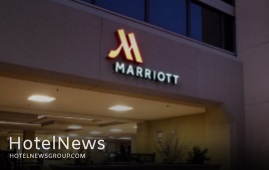
💫چه هتل هایی از چک این تلفن همراه استفاده می کنند؟ 🔸 بسیاری از برندهای بزرگ هتلداری سرمایهگذاری هنگفتی روی فناوری چک این تلفن همراه هتل انجام دادهاند مثل ؛ 🔸 هتلهای زنجیره ای (Marriott ) و (shraton) با استفاده از اپلیکیشن Bonvoy 🔸 هتلهای زنجیره ای (Hilton) با استفاده از اپلیکیشن Digital key و Hilton Honors
ایجاد شده: 6/خرداد/1401 آخرین ویرایش: 6/خرداد/1401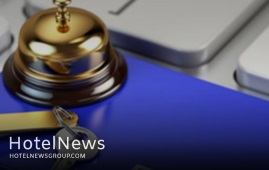
💫 معایب موبایل چک این 🔸 کاربرانی که باتری تلفنشان کم است یا اغلب تلفن خود را فراموش میکنند ، ممکن است بخواهند یک نسخه از کلید کارتی را از پذیرش دریافت کنند و از آنجایی که بیشتر هتلها برای تحویل کلید اتاق به کارت شناسایی عکسدار نیاز دارند، این امر میتواند منجر به ایجاد مشکل برای ورود به اتاق شود. 🔸 اتصال بد اینترنت در راهروها و قطع برق می تواند منجر به مشکل باز کردن درب اتاق مهمان از طریق تلفن هوشمند شود پس هتلهایی که خدمات موبایل چک این را اجرا میکنند باید روی پوشش بیسیم و برق اضطراری هتل به اندازه کافی سرمایهگذاری کنند. 🔸 همچنین تعامل بین مهمان و کارکنان هتل کم میشود و در نتیجه مهمانان یک تجربه شخصیسازی شده از سمت هتل را از دست میدهند. 🔸 کارمندانی که بدون آموزش کامل پذیرش یا رزرواسیون ، گزینههای چکاین دیجیتالی را فعال میکنند، میتوانند مهمان های چک این آنلاین را بینند که اتاقهای موجود را زودتر از میهمانان در صف میز پذیرش رزرو میکنند و این باعث اختلال در کار پذیرش میشود.
ایجاد شده: 6/خرداد/1401 آخرین ویرایش: 6/خرداد/1401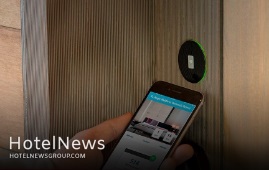
💫 مزایای موبایل چک این چیست؟ 🔸 معمولاً مهمانانی که موبایل چک این را انتخاب میکنند میتوانند ازقبل اتاق خود را انتخاب کنند و پس از ورود به هتل از میز پذیرش بگذرند و مستقیماً به اتاق آماده شده خود وارد شوند. 🔸 از لحظهای که شما به سیستم هتل وارد میشوید، با توجه به اعلان هایی که در صفحه تلفن همراه شما ایجاد مي شود متوجه خواهید شد چه موقع اتاق برای مهمان بعدی تمیز و آماده خواهد شد. 🔸 برنامههای موبایل چک این ، جزئیات رزرو را دقیقا ارائه میدهند و به مهمانان این اجازه را میدهد که مدت اقامت خود را تمدید کنند. 🔸 اطلاعات جوایز، جزئیات امتیاز و اغلب اطلاعات محلی مانند گزارش آب و هوا یا ترافیک را میتوان در این اپلیکیشنها مشاهده کرد. 🔸 مدیران بازاریابی هتل میتوانند از طریق این برنامه قبل از ورود مهمان با مهمانان ارتباط برقرار کنند و امکانات یا خدمات هتل را برای افزایش فروش هتل تبلیغ کنند. 🔸 اکثر سیستمهای موبایل چک این ، در صورتی که پرداختی در چک این الکترونیکی وجود نداشته باشد یا منقضی شده باشد، به پذیرش اطلاع خواهند داد.
ایجاد شده: 6/خرداد/1401 آخرین ویرایش: 6/خرداد/1401
💫 چکاین تلفن همراه چیست؟ 🔸 بیماری کووید-۱۹ باعث ایجاد و ارائه خدمات در بسیاری از کسبوکارها به صورت آنلاین شده است. 🔸 موبایل چکاین یک فناوری هتل است که معمولاً ، مهمانان هتل از طریق یک اپلیکیشن میتوانند برای انتخاب اتاق خود اقدام کنند و قبل از رسیدن به هتل، فرآیند ورود را تکمیل کنند. 🔸 آنها پس از ورود می توانند بدون تماس مستقیماً از قسمت پذیرش بگذرند و وارد اتاق خود شوند و از دستگاه تلفن همراه خود به عنوان کلید اتاق خود استفاده می کنند. 🔸 علاوه بر این، طبق گزارش های انجام شده ۷۳ ٪ از هتلداران بر این باورند که فناوری های آنلاین به بخش مهمی از تجارت آنها تبدیل خواهد شد.
ایجاد شده: 6/خرداد/1401 آخرین ویرایش: 6/خرداد/1401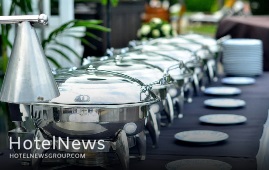
Outside of fast-food and fast-casual restaurants, which are predicated on familiarity and uniformity, no two food and beverage operations are the same. Each has its own characteristics; its own challenges. It’s these variables that keep managers up at night wondering how to tweak the revenue side and reduce operational costs without adversely affecting product quality and delivery. It’s a lot to juggle. F&B is the second-most important revenue stream in a hotel after rooms. It is imperative, then, to control the cost structure to ensure a healthy bottom-line. Let’s not forget: F&B is highly volatile, which is to say we all eat and drink; thus, effectively controlling the cost of sales element is always a challenge. When it comes to cost center gross profit margins, the rooms and F&B departments are divergent. While the rooms division is looking at a ~25% cost basis and a ~75% GOP margin, the F&B operation is closer to a ~75% cost basis with a ~25% GOP margin. That contrast screams for effective cost control. The purpose of this article is to present the different operational costs and undistributed costs, in accordance with USALI cost structures. (Note: Hoteliers, it’s not a bad idea to check that your accounts department is following the Uniform System of Accounts for the Lodging Industry (USALI) when it comes to producing an account of the hotel operation.) The aforementioned 25% GOP on the F&B cost center is a low-end objective, while the target GOP percentage will vary considerably in accordance with the type of asset operation. However, whether it’s a luxury beachfront property or a city-center select-service hotel with limited F&B offerings, it’s important to set out a realistic cost plan when preparing the operational budget. Source: HotStatsObjectives & Key Results 1. Revenue (100%) F&B revenue starts with your point-of-sale (POS) system and how it’s managed, controlled and integrated with your property-management system (PMS). But effectively controlling your revenue starts with hiring the right people. For instance, rethink hiring staff purely on their previous experience. Don’t forget: You want sales people, not just order takers. All frontline staff should be fully aware of the department’s revenue objectives and should actively play their part in securing those objectives. When revising a menu card or bar list—and it’s recommended to do this every three months—keep it relevant to your customer base. Carefully consider the number of menu options to include, and keep an eye open on the latest trends in both the bar and the dining room. Consider being a trailblazer rather than a trend follower. You should always look to differentiate from your competitors to gain a competitive advantage. Encourage up-selling and cross-selling whenever possible. The customer is always keen to listen to a restaurant server or bartender’s advice on the offerings. 2. Cost of Sales (≤32%) There is no hard or fast rule as to a cost percentage to aim for. Again, it depends largely on the type of operation. However, there are outer limits to consider if you’re going to arrive at the bottom line without feeling you need to scrap the filet mignon and replace it with Margherita pizza. A good starting point for F&B cost of sales for a 4- or 5-star full-service resort or city operation would be 35% on food and 25% on beverage sales. With a 70/30 mix on sales, this will give you an overall cost percentage of around 32%. Take into account regional variances, since, amongst other factors, the tax structure for alcoholic beverages varies region to region and will affect the ultimate selling price. Check back on last year’s results for comparison purposes, and also look at net price point in both the restaurant and bar when compared with your direct competitors. Remember: You don’t want to spook the market with a pricing policy that will drive customers away. A few cost control pointers to consider Aim to keep monthly inventory turnover above x4.0 for food and x1.5 for beverages.Keep total food wastage below 0.5% of sales.Prepare a budget for the staff restaurant F&B costs and control the food transfers from the main kitchen to the staff kitchen.Drill down and analyze any significant sales potential differences for beverages in both the restaurant and bar.Establish and control an effective pouring policy and pricing policy in the bars.Listen to section heads and supervisors at the weekly staff meeting. 3. Payroll Costs (≤30%) Payroll can prove to be one of the more challenging of costs to control in any F&B operation, especially if you work in a seasonal market with a shortage of qualified labor. If this is the case, look to establish a full-time contracted nucleus of qualified professionals in each team—kitchen, restaurant and bar—taking into account the availability of semi-qualified seasonal labor, and look to contract the high-season employees through an agency. The latter can push up your costs if not properly controlled, but it does afford you the much needed flexibility if business suffers a downturn. Given the COVID-19 situation, there will be important service-delivery changes required, especially if you have relied on a buffet service in the past. Staffing costs will no doubt suffer because of these changes, so it’s better to be prepared in advance with a plan and a budget reassessment in hand. 4. Other Costs (≤8%) Other costs cover a whole host of operating costs, from staff uniforms, table linen and laundry, to menu printing, bar and restaurant supplies and entertainment. The most efficient way to control these costs is through strict year-over-year budgeting control and benchmarking the cost percentage within your competitive set. Be sure to compare similar types of operation, as costs can vary significantly from an all-inclusive operation to a standard full-service operation. We’ve considered a ball park figure of (≤8%) for these costs; however, this could be as low as 5% depending on the hotel’s entertainment policy and requirements. 5. F&B GOP (≥30%) If we add up the different costs as laid out above, then we have the following: Cost of Sales 32%Payroll Costs 30%Other Costs 8%Total Costs 70%Which leaves the GOP margin at a reasonable 30%. These figures are merely what we consider to be typical for the average operation, and will vary region to region. However, the message here is to make your own budget plan, taking into account the reality of your property’s location and type of operation, with the primary objective of producing a departmental GOP margin of between 25% and 30%. 6. Undistributed Costs While these costs are not taken directly into account when assessing the performance of the F&B department, they are ubiquitous in the operation and can easily eat away at a healthy overall GOP or EBITDA, if not properly controlled. The usual culprits are Administrative & General (<9.5% of total revenues), which account for myriad costs that need close inspection. Others that derive from the F&B department include credit card commissions, along with Property & Maintenance (<3.5%) and Utilities (<4.0%)—think kitchen equipment maintenance, gas, water and electrical power. However, as these costs vary significantly operation to operation and region to region, as a percentage of total revenue, they should be benchmarked against the data of a chosen competitive set in order to understand exactly where your property is positioned and where you should start drilling down for any excesses. Conclusion To maximize your F&B departmental result, careful planning, control and communication are key. Once you are satisfied with the objectives laid out and the owner/manager has signed off on your budget plan, it is of paramount importance that your key managers and supervisors are fully aware of the objectives and what their role and responsibilities are in meeting the goals. When the monthly analytical results come in from your accounts department, you should sit down with the team and analyze the costs and revenues against your budgeted plan and look to correct any deviations on costs, while also analyzing your revenue using per capita values—both resident and transient—as a guide. Check your departmental cost ratios against the budgeted percentages—cost of sales, payroll and other costs—on a monthly and year-to-date basis, and correct any overspend within a short timeframe in order to protect your departmental GOP.
ایجاد شده: 26/اسفند/1399 آخرین ویرایش: 26/اسفند/1399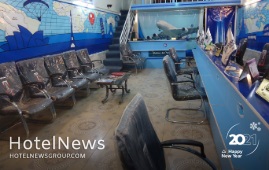
🔴 آژانس مسافرتی آنلاین (OTA) 🔹 یک بازار مبتنی بر وب است به مصرفکنندگان امکان میدهد تا محصولات و خدمات مسافرتی از جمله هتلها، پروازها، اتومبیلها، تورها، سفرهای دریایی و موارد دیگر را مستقیماً با تأمینکنندگان سفر بررسی و رزرو کنند. 🔹 روزانه میلیونها مسافر در سراسر جهان از OTA برای برنامهریزی سفرهای تفریحی و کاری خود استفاده میکنند. 🔹 آژانسهای آنلاین امکان دسترسی به میهمانان بالقوه در بسیاری از کشورها و شهرهای جهان را فراهم میکنند که دسترسی به آنها از طریق تلاش های بازاریابی معمولی بسیار دشوار است. 🔹 علاوه بر این، OTA ها بینش و ابزارهای بازار برای هدف قرار دادن مسافران، ایمنسازی و پردازش رزروها، برقراری ارتباط با میهمانان و مدیریت بازبینیها را ارائه میدهند. 🔹 هتلها با OTA ها کار میکنند. 🔹 هتلها در هر اندازه و با هر نوع خدمات، قراردادهایی را امضا میکنند تا خود را در OTA ذکر کنند. 🔹 برای لیست اتاقهای هتل در این بازار هیچ هزینهای از قبل پرداخت نمیشود. 🔹 این آژانسهای آنلاین فقط هنگام رزرو اتاق درآمد کسب میکند و درصدی از ارزش کل رزرو را برمیدارند.
ایجاد شده: 17/دی/1399 آخرین ویرایش: 17/دی/1399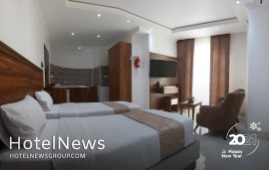
🔴 عوامل موثر بر قیمتگذاری در هتلها 🔹 با شناخت عوامل مؤثر و مهم در قیمتگذاری در صنعت هتلداری، میتوان بهترین شیوه را انتخاب کرد و به کار گرفت که به نوبه خود منجر به افزایش درآمد هتلداران و افزایش گردش پول در جامعه میشود. 🔹 عوامل تاثیرگذار بر قیمتگذاری خدمات این صنعت، متعدد و بسته به محل و زمان میتواند متفاوت باشد. 🔹 به طور مثال بررسی عوامل مختلف تاثیرگذار بر قیمتگذاری در صنعت هتلداری در آفریقا نشان داد که عوامل زیر نقش مهمی را ایفا میکنند؛ 📌 توجه به مسائل زیستمحیطی 📌 امکانات رفاهی 📌 برند هتل 📌 عوامل مدیریتی 📌 موقعیت هتل 📌 کیفیت ارائه خدمات 📌 سرویسهای زیرساختی 📌 بازاریابی بر قیمتگذاری خدمات هتلداری 🔹 همچنین مهمترین عوامل مؤثر بر قیمتگذاری در صنعت هتلداری هند، موارد زیر هستند؛ 📌 ارائه تخفیف به میهمانان 📌 کمک به میهمانان 📌 آداب خوشامدگویی گرم 📌 انجام کار به شیوه دوستانه 📌 ارائه اتاق تمیز به آنها
ایجاد شده: 17/دی/1399 آخرین ویرایش: 17/دی/1399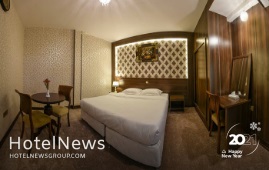
🔴 شاخص نفوذ OCC ( Penetration ) Index 🔹 شاخصی که برای اندازهگیری سهم هتل از تقاضای بخشهای مختلف بازار طراحی شده است. 🔹 در این شاخص تقاضا برابر است با اتاقهای فروخته شده. 🔺 این شاخص به روش زیر محاسبه میشود؛ 📌 ( اشغال هتل / اشغال بر اساس یک بخش بازار ) ضرب در عدد ۱۰۰ = شاخص اشغال 🔹 می توان سهم عادلانه را "قطعهای از نمودار پای" هتل مورد نظر در بازار دانست. 🔹 به عنوان مثال، اگر ۱۰۰۰ اتاق در مجموعه رقابتی از چند هتل وجود داشته باشد و هتل مورد نظر ما دارای ۱۰۰ اتاق باشد، سهم عادلانه هتل مورد بررسی ما ۱۰ درصد است. 🔹 اگر ۱۰ درصد اتاقهای یک مجموعه رقابتی از چند هتل در یک بازه زمانی مشخص، مربوط به هتل مورد نظر ما باشد، سهم واقعی هتل مورد بررسی ما با سهم عادلانه آن برابر است و شاخص اشغال ۱۰۰ درصد به آن تعلق میگیرد.
ایجاد شده: 17/دی/1399 آخرین ویرایش: 17/دی/1399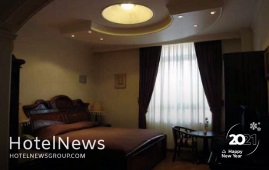
🔴 بدهی غیر رجوعی (Non-Recourse Debt) 🔹 نوعی وام است که با وثیقه تأمین میشود که این وثیقه معمولاً ملکی است. 🔹 در صورتی که وام گیرنده نتواند وام را پرداخت کند، وام دهنده میتواند وثیقه را توقیف کند اما نمیتواند برای دریافت غرامت بیشتر به دنبال وام گیرنده باشد، حتی اگر وثیقه نتواند کل ارزش مبلغ وام را پوشش دهد. 🔹 این یکی از مواردی است که وام گیرنده مسئولیت شخصی در قبال وام ندارد. 🔺 به عنوان مثال اگر گروه هتلهای Marriott صاحب هتلی باشد که نمیتواند بدهی خود را پرداخت کند، وام دهنده نمیتواند برای جبران بدهی به شرکت بینالمللی Marriott برود.
ایجاد شده: 17/دی/1399 آخرین ویرایش: 17/دی/1399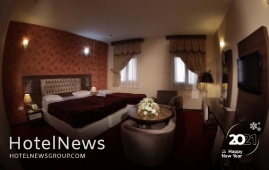
🔴 درآمد خالص به ازای هر اتاق موجود (Net RevPAR) 🔹 از این معیار برای محاسبه درآمد خالص تولید شده به ازای هر اتاق موجود در هتل استفاده میشود. 🔹 در واقع، درآمد خالص به درآمد هر اتاق منهای تمام هزینههای مربوط به اتاق گفته میشود. 🔹 این شاخص بسیار مهم، تصویری از موفقیت یک هتل در کسب درآمد از هر یک از اتاقهای موجود خود را ارائه میدهد. 🔹 این معیار همچنین میتواند در کنار سایر معیارهای مدیریت درآمد برای ایجاد تعدیل در قیمتگذاری به منظور افزایش سطح اشغال یا درآمد دریافتی، مورد استفاده قرار گیرد. 🔹 این معیار صنعت هتلداری با فرمول زیر قابل محاسبه است 🔻 🔺 درآمد هر اتاق منهای هزینههای اتاق تقسیم بر تعداد اتاقهای موجود در هتل
ایجاد شده: 17/دی/1399 آخرین ویرایش: 17/دی/1399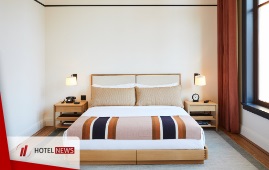
🔴 درآمد خالص عملیاتی ( NOI ) 🔹 درآمد عملیاتی شرکت قبل از کسر مالیات بر درآمد و سود و پس از کسر هزینههای عملیاتی را درآمد خالص عملیاتی مینامند. 🔹 اگر این مقدار مثبت باشد به عنوان درآمد عملیاتی خالص نامیده میشود. 🔹 در حالی که اگر این مقدار منفی باشد به آن خسارت عملیاتی خالص گفته میشود. 🔹 این مقدار اغلب معیار خوبی برای ارزیابی عملکرد هتل محسوب میشود. 🔹 برخی معتقدند این شاخص در مقایسه با سایر شاخصها کمتر در معرض دستکاری مدیریت است. 🔺 مثال در صنعت هتلداری 🔹 درصد درآمد خالص عملیاتی هتل بیشترین ارتباط با سطح اشغال در آن هتل را دارد. 🔹 البته سطح اشغال هتل به شاخصهای دیگری همچون نرخ متوسط روزانه، بخش بازار، سن بنای هتل و وابستگی برند نیز بستگی دارد.
ایجاد شده: 22/آذر/1399 آخرین ویرایش: 22/آذر/1399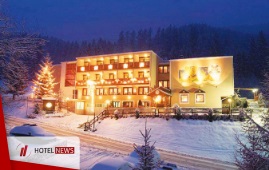
🔴 استراتژی Mice 🔹 این کلمه مخفف کلمات زیر است: 📌 نشستها و اجلاسها ( Meetings ) 📌 انگیزهها و محرکها ( Incentive ) 📌 کنفرانسها ( Conferences ) 📌 نمایشگاهها ( Exhibitions ) 🔹 به یک روند سیستماتیک متشکل از برنامهریزی، توسعه و ایجاد و بازاریابی رویدادی در رابطه با هتلداری و گردشگری گفته میشود. 🔹 این استراتژیها باید بر روی بخشهایی همچون سفر به مقصد رویدادها و یا کسانی تمرکز کند که میتوان آنها را برای حضور در رویدادها در فاصلهای دور از خانههایشان جلب کرد. 🔹 به طور کلی رویدادهایی که انگیزش سفر ایجاد میکنند را میتوان در سه دستهی رویدادهای فرهنگی، رویدادهای ورزشی و رویدادهای تجاری تقسیم کرد. 🔹 سالانه رویدادهای تجاری/کاری بیشماری از جمله نمایشگاه، گردهمایی، سمینار، کنفرانس، میتینگ، سمپوزیوم و همایش در سراسر جهان برگزار میشود و بازدیدکنندگان فراوانی را به شهر یا کشور میزبان میکشاند. 🔹 وجود این حجم از رویدادهای مختلف در جهان باعث بهوجود آمدن شاخهای به نام استراتژی مایس ( MICE ) در صنعت هتلداری و گردشگری شده است. 🔹 مایس یک استراتژی است که از ترکیب تجارت، حملونقل، سرمایهگذاریهای مالی و مسافرت به وجود آمده و محصول دهههای اخیر است.
ایجاد شده: 8/آذر/1399 آخرین ویرایش: 8/آذر/1399